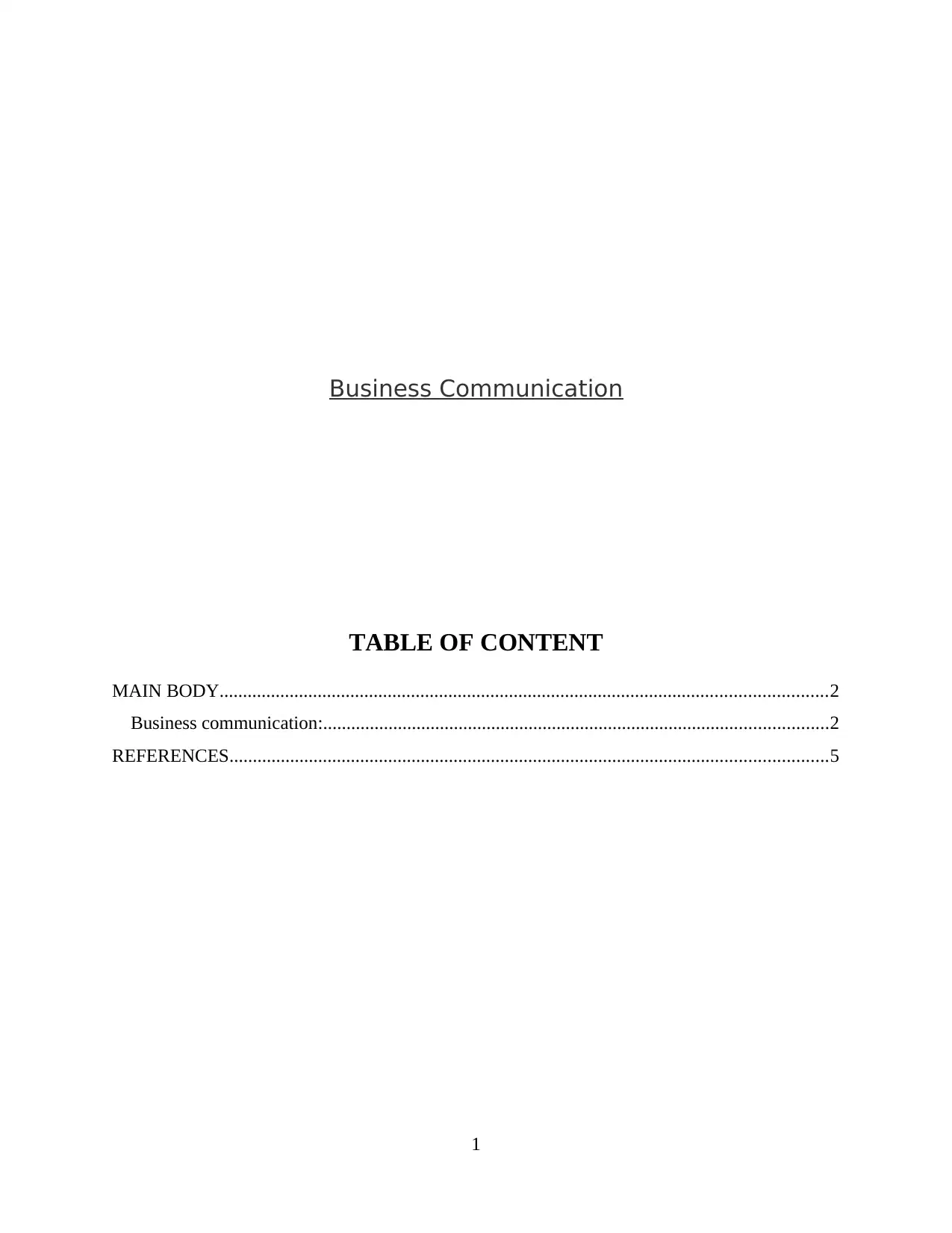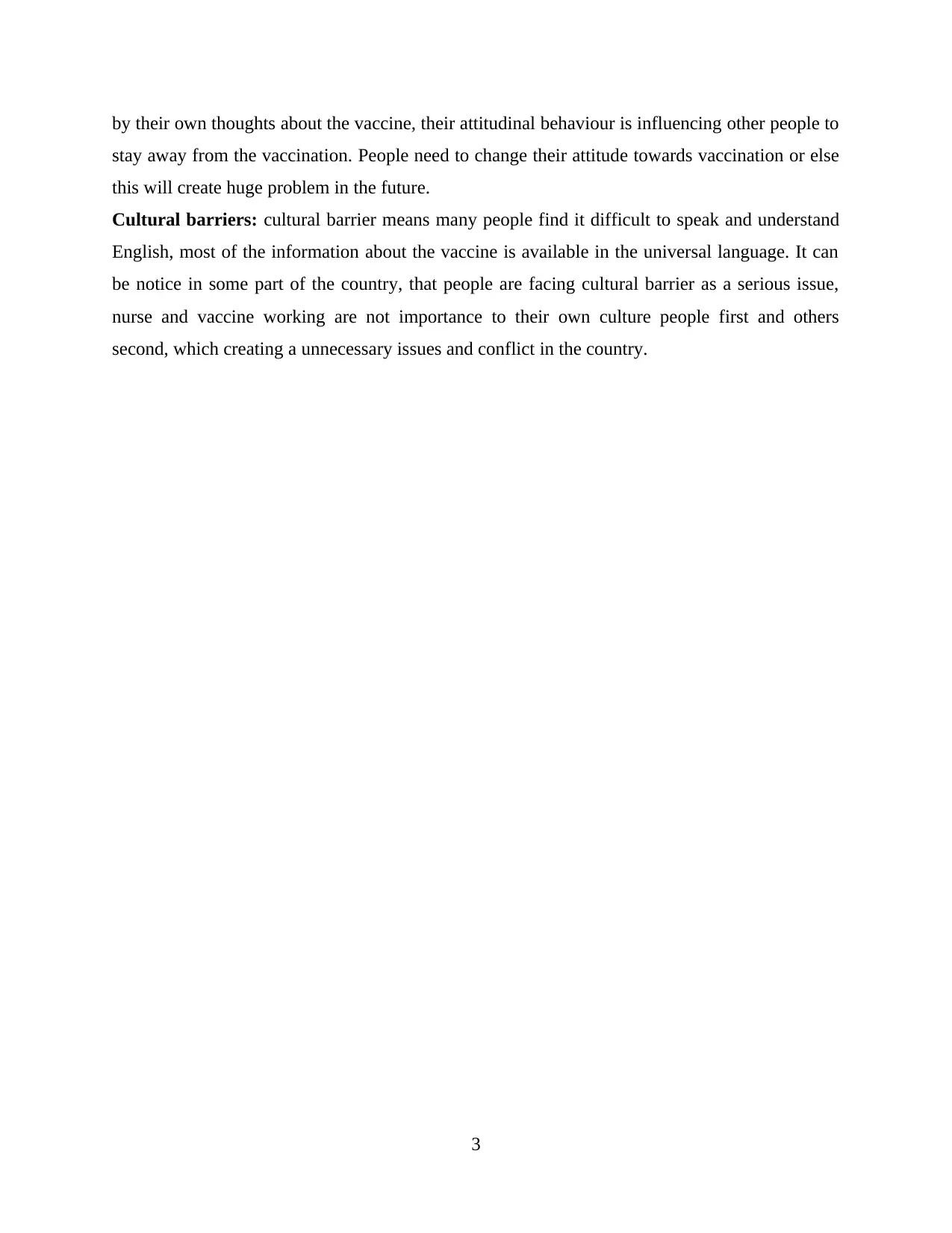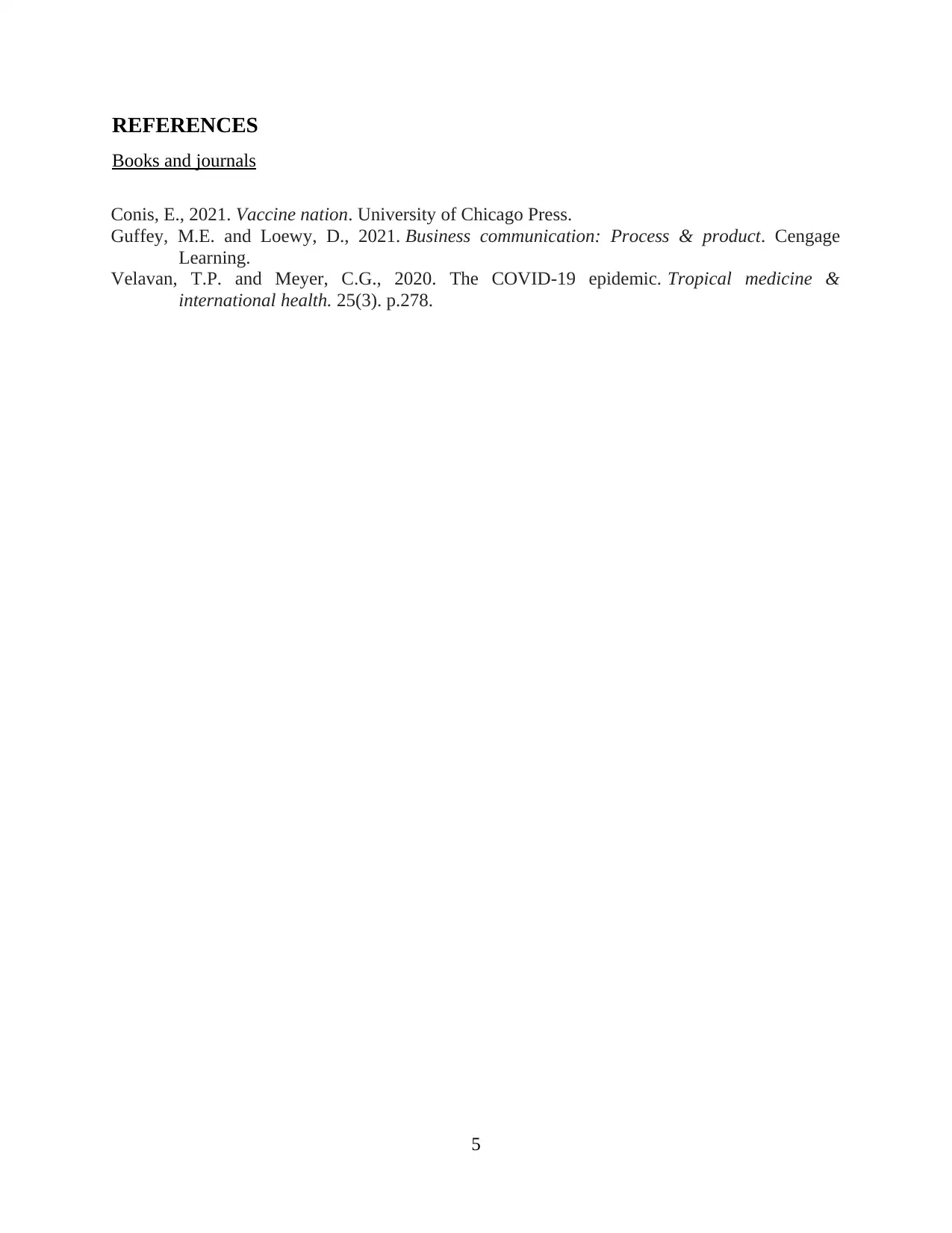Business Communication Strategies: Overcoming Vaccine Hesitancy
VerifiedAdded on 2023/06/18
|5
|658
|69
Report
AI Summary
This report analyzes the various barriers hindering COVID-19 vaccination efforts, categorizing them into physical, emotional, informational, attitudinal, and cultural challenges. It highlights how physical barriers, such as the distance to vaccination centers, and emotional barriers, including trust issues and fear of side effects, contribute to vaccine hesitancy. The report also addresses informational barriers, emphasizing the spread of misinformation and the lack of clear communication about vaccine benefits. Furthermore, it discusses attitudinal barriers, where individuals believe in their immunity, and cultural barriers, arising from language and cultural differences. The report underscores the importance of effective business communication strategies in overcoming these barriers, promoting public health, and ensuring widespread vaccination.
1 out of 5












![[object Object]](/_next/static/media/star-bottom.7253800d.svg)